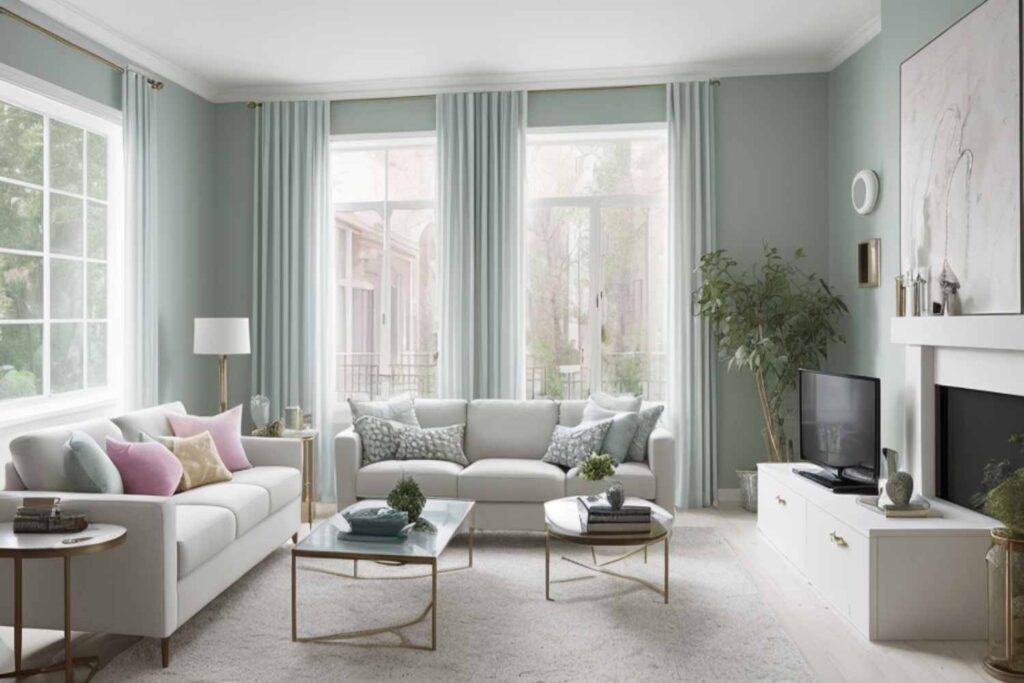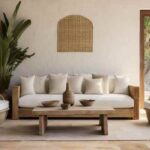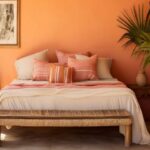
Contents of the article
Interior design is a creative and thrilling process that balances aesthetics, functionality, and personal style. Whether you’re decorating your home or working as a professional designer, understanding interior design basics is essential.
In this article, we will cover the fundamental elements and principles that form the foundation of interior design, providing a comprehensive guide to creating visually appealing and functional spaces.
Understanding Space Planning

Space planning is an essential initial phase in every interior designs project.
It entails meticulously analyzing the given space, considering its intended purpose and devising the optimal arrangement of furniture and other elements to enhance functionality and promote a smooth flow.
The room can be designed to be efficient, comfortable, and visually appealing by employing proper space planning techniques.
Color Palette interior design

The significance of colors in interior design cannot be overstated, as they have the power to evoke specific moods and establish the overall ambiance of a room.
Selecting a harmonious color palette that complements the desired style and purpose of the space is imperative.
Warm colors, such as red and orange, can create a cozy and energetic atmosphere, while cool shades like blue and green promote a sense of calmness and tranquility.
Furniture and Layout

Selecting the right furniture and arranging it properly can transform a space. Consider the scale and proportion of the furniture in relation to the room size.
Opt for pieces that are both functional and aesthetically pleasing. The layout should encourage easy movement and traffic flow while allowing for comfortable seating and conversation areas.
Lighting

Lighting is a crucial element in interior design that greatly impacts the overall ambiance and functionality of a space. Natural light should be maximized by using window treatments that allow for the right amount of sunlight.
Layered lighting, including ambient, task, and accent lighting, can create a well-lit and visually appealing environment.
Texture and Materials

Incorporating different textures and materials adds depth and visual interest to a room. Whether it’s a plush rug, textured wallpaper, or a variety of fabric choices, playing with texture creates a dynamic and layered design.
Utilizing a mix of materials such as wood, metal, glass, and natural fibers can also add variety and personality to the space.
Balance and Symmetry

Achieving balance and symmetry is vital for a visually pleasing interior. Balance refers to the distribution of visual weight in a room, whether it’s symmetrical or asymmetrical.
Symmetrical balance involves arranging elements evenly on both sides of a central axis, creating a sense of order and formality. Asymmetrical balance, on the other hand, involves arranging elements with varying visual weights to create a more dynamic and casual look.
Focal Point

Every well-designed room needs a focal point, a visually prominent element that draws attention and sets the tone for the space. This could be a fireplace, a piece of artwork, a statement piece of furniture, or even a stunning view.
Creating a focal point helps anchor the room and guides the placement of other design of interior elements.
Proportion and Scale

Proportion and scale refer to the relationship between the sizes of different elements within a interior design at home. It’s important to choose furniture, accessories, and artwork that are proportionate to the size of the space.
Oversized or undersized pieces can disrupt the flow and harmony of the room. Carefully consider the scale of each item to maintain a balanced and visually pleasing interior.
Unity and Cohesion

A well-designed room should have a sense of unity and cohesion. This can be achieved through consistent use of color, pattern, and style throughout the space.
By establishing a cohesive design theme, whether it’s contemporary, traditional, or eclectic, you can create a harmonious and visually appealing interior.
Emphasis on Functionality

While aesthetics are important, functionality should not be overlooked. Consider the needs and lifestyle of the occupants when designing a space.
Ensure that furniture is arranged to facilitate easy movement, storage solutions are incorporated, and that the room serves its intended purpose while still being visually appealing.
Attention to Details

The success of an interiors design project lies in the attention to details. Pay close attention to smaller elements such as hardware, trimmings, and accessories to add the finishing touches to the space.
These details can enhance the overall design of interior and make a significant difference in the final outcome.
Personal Style

Interior design is a creative expression of personal style. While it’s important to understand the fundamentals, don’t be afraid to incorporate your unique preferences and personality into the design.
Experiment with different styles, colors, and patterns to create a space that reflects your individuality and creates a sense of belonging. Consider your personal taste and interests when selecting furniture, artwork, and decor items.
Whether you prefer a minimalist, bohemian, or contemporary style, infusing your personal flair into the design of interior will make the space feel authentic and welcoming.






